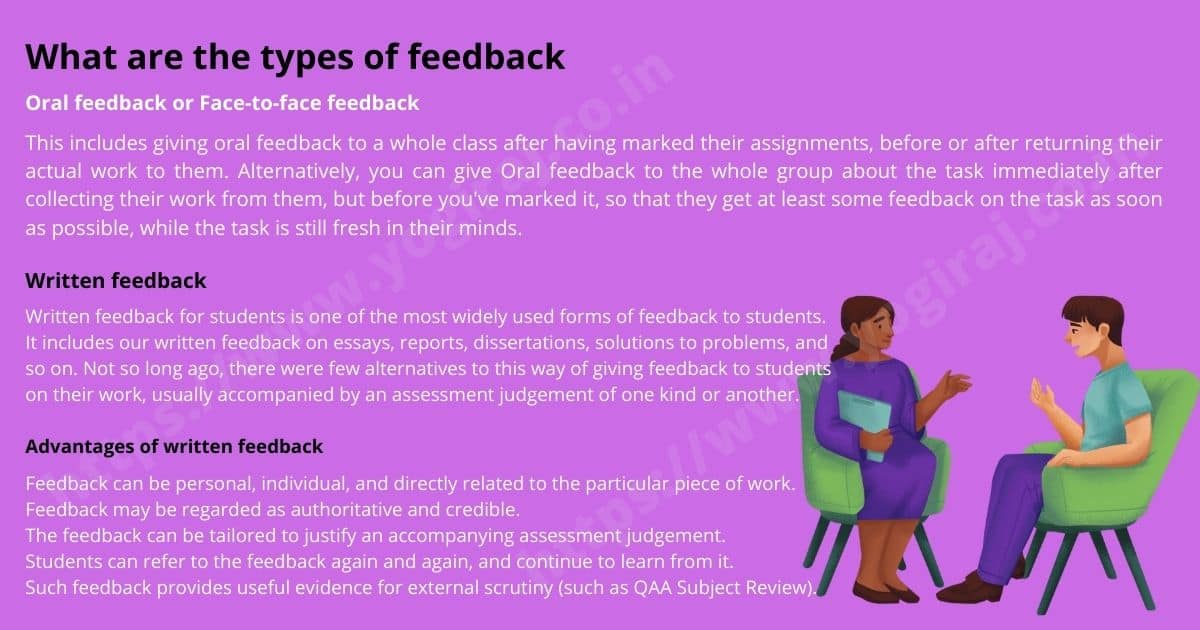Types of feedback
by Yuvi - August 13, 2022
What are the types of feedback
Oral feedback or Face-to-face feedback
This includes giving oral feedback to a whole class after having marked their assignments, before or after returning their actual work to them. Alternatively, you can give Oral feedback to the whole group about the task immediately after collecting their work from them, but before you’ve marked it, so that they get at least some feedback on the task as soon as possible, while the task is still fresh in their minds.
Advantages of Oral feedback
- You can give a lot of feedback to a lot of students in a relatively short time.
- Feedback is strengthened by tone of voice, facial expression, body language, emphasis, and so on.
- Students can compare reactions to your feedback, especially when you use some discussion in the process.
- You can support (and partially evidence) giving feedback to the whole group by issuing a handout summarising the main points you include.
Disadvantages of Oral feedback
- Feedback is less individual, personal and intimate to students.
- You can only concentrate on principal feedback matters, and can’t cover less-common feedback issues.
- Students’ records or memories of your feedback may be inaccurate and sketchy, and they may not remember the detail when later they look back over their assessed work.
- Students may be so busy thinking about one particular aspect of your feedback, which they know will apply to their particular work, that they miss other elements as you talk.
Written feedback
Written feedback for students is one of the most widely used forms of feedback to students. It includes our written feedback on essays, reports, dissertations, solutions to problems, and so on. Not so long ago, there were few alternatives to this way of giving feedback to students on their work, usually accompanied by an assessment judgement of one kind or another.
Advantages of written feedback
- Feedback can be personal, individual, and directly related to the particular piece of work.
- Feedback may be regarded as authoritative and credible.
- The feedback can be tailored to justify an accompanying assessment judgement.
- Students can refer to the feedback again and again, and continue to learn from it.
- Such feedback provides useful evidence for external scrutiny (such as QAA Subject Review).
Disadvantages of written feedback
- Handwritten feedback can be hard to read!.
- When critical, handwritten feedback – because of its authoritativeness – can be threatening.
- It is slow and time-consuming to write individually on (or about) students’ work, and hard to make time for when class sizes are large.
- You can’t refer to your own feedback to different students unless you keep photocopies of their work and your comments.
- It becomes too tempting to degenerate into shorthand – ticks and crosses – rather than to express positive and critical comments.











